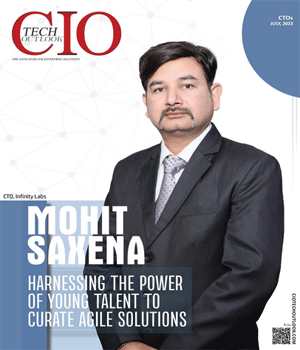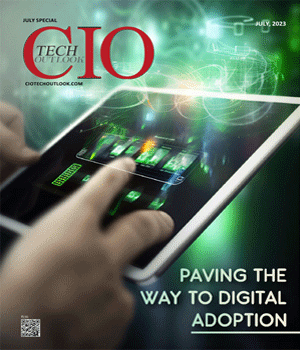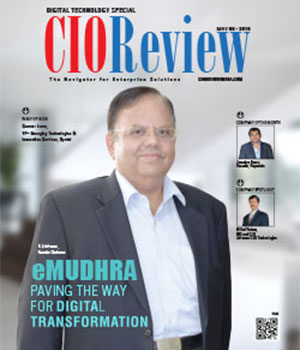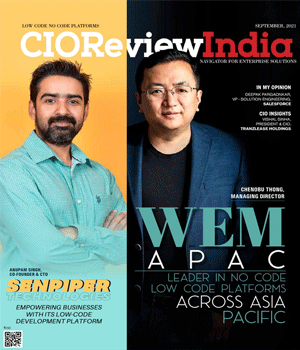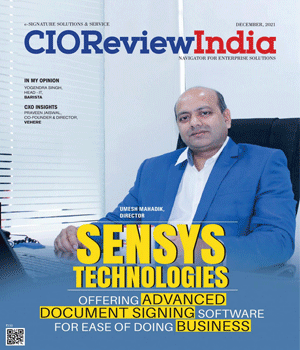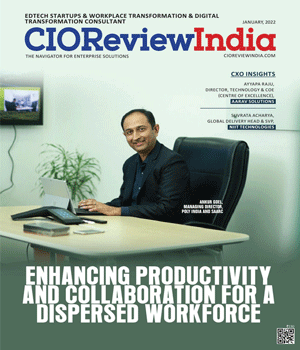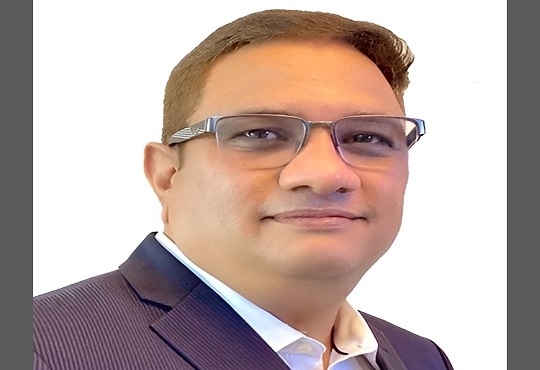
CIO's Role in Driving Enterprise Sustainability
Manoj Deorukhkar, Chief Information Officer at Sterling & Wilson Limited
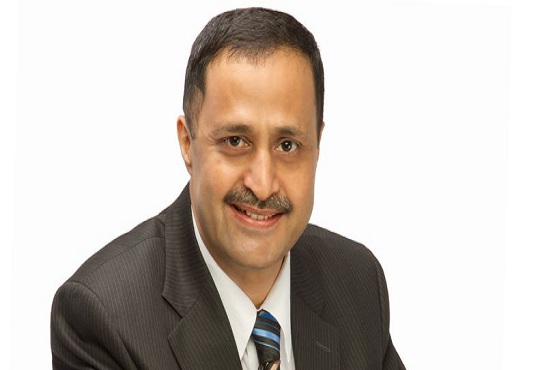
Manoj Deorukhkar, Chief Information Officer at Sterling & Wilson Limited, in interaction with CIOTechOutlook, shares his insights on enterprise sustainability, wherein he talks about the critical aspects relating to the energy efficiency of IT infrastructure, circular economy practices, and more.
According to Gartner, most CIOs will soon play a central role on their enterprise sustainability team, developing new technology solutions, services, and IT/digital infrastructure and building critical data platforms to drive sustainable business strategy. How do you perceive this change in the role of a CIO?
Sustainability has taken the center stage in every organization's planning and has also become an integral part of all future actions. From an organizational perspective, sustainability strategies cover four essential areas — climatic change, globalization, social inequality, and the inclusion of diversity. These areas demand a digital platform that can seamlessly control the operation.
Digitizing an operation is not restricted to automating it, but also involves a rapid transformation that is on par with technological evolutions. For instance, Sterling & Wilson is a company that has sustainability at its core. The majority of the company's contracts are for renewable energy, including EPC engineering, procurement, and construction as well as post-construction operations and management. Presently, all the assets spread across 26 countries are remotely monitored and operated through digital platforms.
The CIOs of today are playing a significant role in not only digitizing the operations but leading the entire thought process in terms of driving the organization’s sustainability strategy.
What are the challenges in increasing the energy efficiency of the IT infrastructure and workplace services? How can they be addressed?
The energy efficiency of an IT infrastructure depends upon the level of technology that has been embedded and on the kind of strategy that an organization has adopted, for example, on-premise, cloud, or hybrid. While each model brings unique advantages and disadvantages for the organization, the energy efficiency level depends on the company's mindset. Moreover, for a developing country like India, capital is often a major constraint when upgrading the IT infrastructure. Notwithstanding this fact, a company with sustainability at its core will adhere to a solution that ensures energy efficiency.
As enterprises look to implement circular economy practices, they need to partner with vendors and service providers to improve e-waste management, and increase reuse and refurbish. What approach do you advocate for this?
Typically, assets like laptops and desktops wear out after three to four years of usage, thereby creating a huge financial and environmental burden on the entities. In order to mitigate this challenge, we at Sterling & Wilson have tied up with a number of service providers, who are nominated and impanelled by OEMs. These service providers help mitigate minor and major challenges to shoot up the longevity of the assets to up to seven to eight years.
At the end of the product's lifetime, we also carefully work to ensure proper disposal of the assets. Sterling and Wilson are also going to acquire e-waste restoration certification to strictly adhere to the stipulated guidelines.
On the whole, the reuse and circular movement of the equipment has seen a huge upsurge in the last three years and is expected to follow the same pattern that will ensure a decline in fresh resource consumption.
Analytics and metrics around materials, energy, water, and waste come from technology that is changing rapidly and is embedded in digital transformation. How can it be used to meet sustainability targets?
Unlike many organizations which are into manufacturing or Supply Chain Management, as an EPC company, Sterling & Wilson operates entirely through the project sites. For instance, by April 2020, the organization had almost 450 in India. These sites are typically placed in clients’ locations, making it difficult to develop a framework for effectively operating and monitoring the assets.
However, our IT, sustainability, and HSE team work in tandem to implement a digital system wherein sustainability and its measurement plays a major part. We collect the data from the project sites, which are verified and aggregated together. These data help to gain insights, ensuring constant surveillance and maintenance of the assets.
Moving forward, how are enterprises going to evolve in terms of running sustainable operations? Which new technologies are going to help them in the journey?
As far as organizational sustainability is concerned, there are four important factors that will be of critical importance. Globalization will be key for deciding the success of a company in the coming future and the workforce will play a determining role in attaining sustainability goals.
The stance of an organization in terms of technology adoption will also be crucial for sustainable operations. With the rise of Industry 4.0, it is now imperative to seamlessly extract the data from the actual place of operation on a real-time basis to generate valuable insights. Lastly, climatic sustainability will also be of vital importance. In the coming days, organizations will be required to reduce the wasteful use of resources and optimize operations to embark on a journey toward a sustainable future.
CIO Viewpoint
Why Foolproof Facial Recognition Is Key Against...
By Joseph Sudheer Thumma, Global CEO & MD, Magellanic Cloud
National Technology Day 2025: Powering Progress...
By CIOTech Outlook Team
Aligning IT Roadmap with Business Objectives: A...
By Subhash singh Punjabi, CISO & Head Enterprise Architecture, Deepak Fertilisers & Petrochemicals Corporation Ltd
CXO Insights
Revolutionizing Small-Scale Electronics:...
By Dr. Prince Joseph, Group CIO, SFO Technologies
Accelerating India's Digital Renaissance...
By Tak lee, CEO and Managing Partner, Hashedem
How leveraging technology solutions automates...


